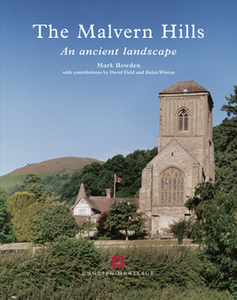English Heritage Archaeological Monographs
English Heritage, 2014. https://doi.org/10.5284/1028203. How to cite using this DOI
Data copyright © English Heritage unless otherwise stated
This work is licensed under the ADS Terms of Use and Access.
Primary contact
Historic England
The Engine House
Firefly Avenue
Swindon
SN2 2EH
Resource identifiers
- ADS Collection: 1416
- DOI:https://doi.org/10.5284/1028203
- How to cite using this DOI
The Malvern Hills: An ancient landscape
Bowden, M.
English Heritage (2005)
Abstract:

The Malvern Hills are a dramatic ridge of ancient volcanic rocks along the western edge of the Severn Valley. Archaeologically, the Hills are known almost exclusively for the two very large and prominent Iron Age hillforts that crown the ridge: British Camp and Midsummer Hill. In 1999 the Royal Commission on the Historical Monuments of England (now part of English Heritage), with a number of partners, embarked on an investigative project designed to study the hillforts and other well-known sites, but also to focus attention on the Hills more widely as a landscape of special archaeological interest. The project involved documentary research, aerial survey and fieldwork. The most significant results are presented here. These results will continue to inform management and conservation initiatives on an around the Hills, as well as future research programmes. The Malverns have formed a boundary at least since the Bronze Age. This is not just a social or political phenomenon. Both in prehistory and in the medieval period, the Malverns were in effect a ritual landscape against which various religious rites were played out. The paramount importance of the numerous springs of pure water that issue from the monuments that have traditionally drawn archaeologists, but by considering the landscape as a whole it is possible to draw legitimate inferences about the way in which the Hills might have been viewed and used by dwellers in the surrounding country.
Download monograph
| The Malvern Hills: An ancient landscape, Bowden, M., English Heritage (2005), ISBN: 9781848021686 | 38 Mb |





